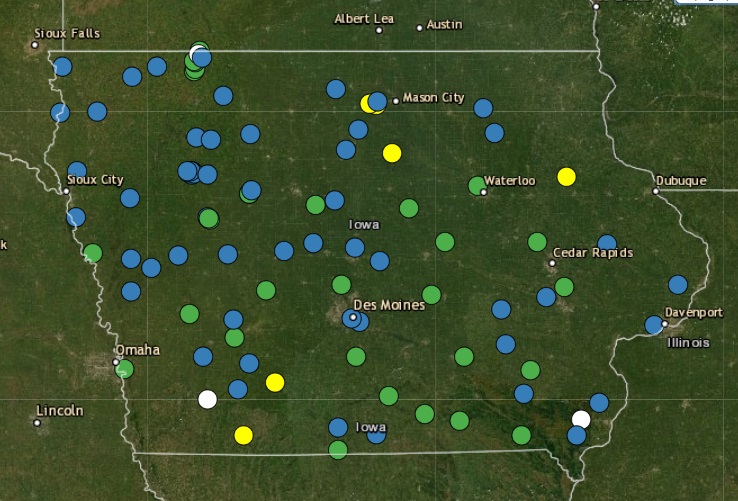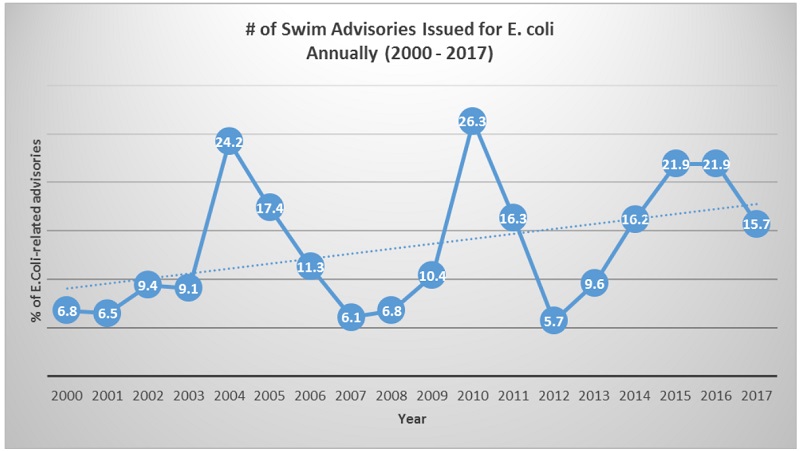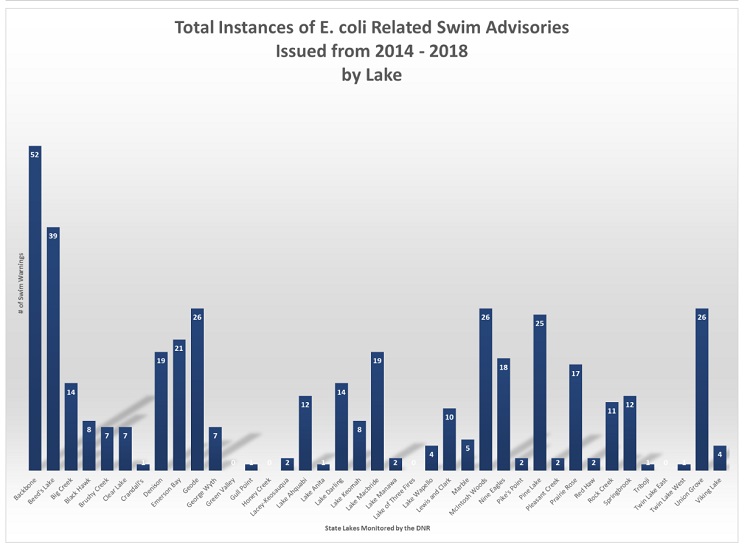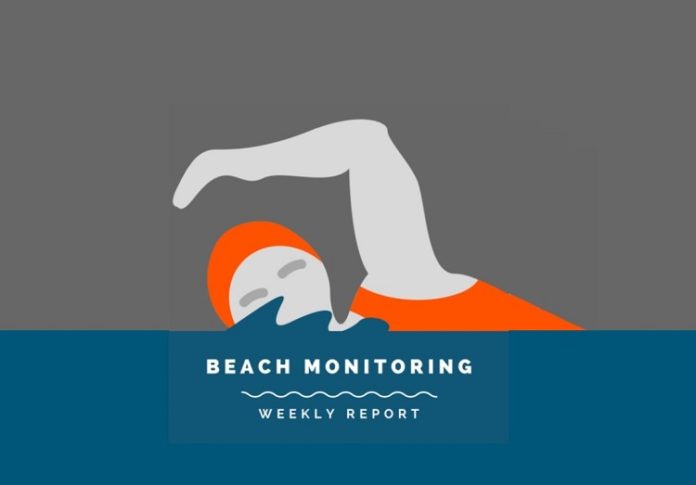
From about Memorial Day through Labor Day, the Iowa Department of Natural Resources (DNR) conducts weekly monitoring of bacterial pollution in Iowa’s 39 state park beaches.
The DNR analyzes water samples from the beaches for certain one-celled microorganisms, known as indicator bacteria, that are visible only under a microscope. High levels of E. coli, a common indicator bacteria, indicate feces is in the water, most commonly in Iowa from livestock sources.
These indicator bacteria are commonly used by state environmental agencies and by the U.S. Environmental Protection Agency to determine the suitability of beaches for swimming-type uses.
Microcystin, a toxin produced by harmful blue-green algae blooms, has also been detected in Iowa’s water bodies.
Due to health risks, when microcystin or E.coli levels exceed certain standards/thresholds, the DNR posts swim advisories telling beach-goers to stay out of the water.
The Iowa DNR and the Iowa Environmental Council track these weekly beach monitoring reports and swim advisories and compare advisory trends from year to year. To review recent trend data, visit the Iowa DNR website.
Beach advisories were issued for four Iowa beaches for E. coli contamination for the week of Aug. 16-22. Beaches with E. coli-related warnings or advisories included:
- Backbone Beach in Dundee Dundee, Delaware County)
- Beeds Lake Beach (Hampton, Franklin County)
- Clear Lake Beach (Clear Lake, Cerro Gordo County
- McIntosh Woods Beach (Ventura, Cerro Gordo County)
Four beach advisories were issued for microcystin-related warnings or advisories for the week of Aug. 16-22.
- Beeds Lake Beach (Hampton, Franklin County)
- Green Valley Beach (Creston, Union County)
- Lake of Three Fires Beach (Bedford, Taylor County)
- McIntosh Woods Beach (Clear Lake, Ventura, Cerro Gordo County)
Four additional beaches exceeding the EPA recommendation for microcystin (8 micrograms/L) but not issued an advisory:
- Clear Lake Beach (Clear Lake, Cerro Gordo County) – 11.4 µg/L
- Lake Darling Beach (Brighton, Washington County) – 16.41 µg/L
- Lake Keomah Beach (Oskaloosa, Mahaska County) – 16.85 µg/L
- Union Grove Lake Beach (Gladbrook, Tama County) – 18.91 µg/L

Source: Iowa Environmental Council


















